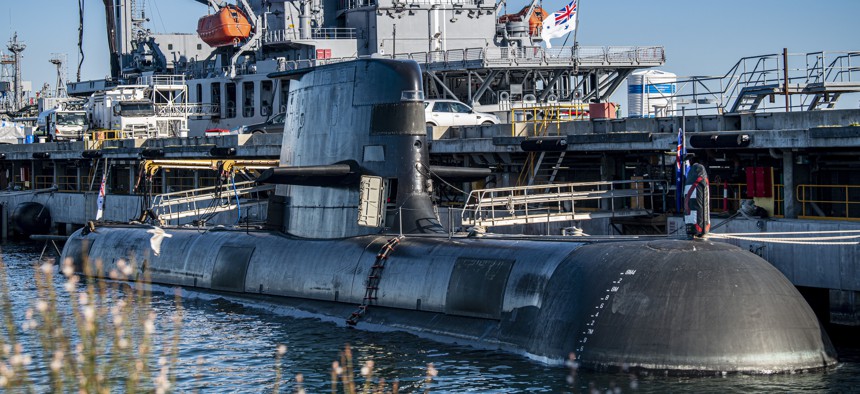These charts show how much more often unvaccinated Albertans are being hospitalized and dying from COVID-19
Alberta Health data accounts for age, vaccination status and population size of each group

Recent rates of hospitalization, intensive care unit (ICU) admission and death among unvaccinated Albertans have been at least eight times higher — and as much as 60 times higher — compared to the fully vaccinated population, depending on which age range you look at.
That's according to a new CBC News analysis of data published by the provincial government.
Data experts with Alberta Health reviewed the analysis and confirmed the methodology as an effective way to compare severe outcomes relative to both vaccination status and age — while also accounting for the population sizes of each group.
These types of comparisons can be tricky, because the risk of severe outcomes increases with age, but so too does the rate of vaccination. As such, population-wide comparisons don't tell the full story.
For example, it's often reported that unvaccinated Albertans make up just 32 per cent of the population but a whopping 74 per cent of the COVID-19 patients in hospital. But this actually under-represents the risk for unvaccinated adults, because a huge proportion of the unvaccinated population is made up of children who are both ineligible for the vaccine and unlikely to end up in hospital.
Breaking the data down by age helps to better understand how things compare among the vaccinated versus the unvaccinated.
"Age, in particular, really controls a few outcomes here in the province," said Craig Jenne, a professor in the Department of Microbiology, Immunology and Infectious Diseases at the University of Calgary.

Jenne also reviewed the data analysis and says it illustrates how effective vaccination against COVID-19 has been in Alberta, so far.
"We see that there's huge protection offered by vaccines, and that's something I think gets missed in the daily updates when we simply see numbers or the percentage of people in hospital," he said.
Here's how it breaks down.
Hospitalizations
It's well known by now that older people are far more likely to end up in hospital than younger people, but looking at the data by both age and vaccination status reveals some stark comparisons.
For instance, it shows that unvaccinated Albertans in their 30s have been ending up in hospital with COVID-19 at roughly the same rate as fully vaccinated Albertans over the age of 80.
From mid-May to mid-September, 400 unvaccinated people in their 30s were admitted to hospital with COVID-19.
That works out to a rate of about 146 hospitalizations per 100,000 unvaccinated 30-somethings over that four-month span.
And that's almost identical to the rate of hospitalization among fully vaccinated Albertans aged 80 and up.

Meanwhile, among unvaccinated Albertans 80 and over, the rate was nine times higher — 1,271 hospitalizations per 100,000.
And the differences in ICU admissions were even starker.
Intensive care units
Just seven fully vaccinated Albertans in their 50s have been admitted to an intensive care unit with COVID-19 since mid-May.
That compares to 181 unvaccinated people of the same age — despite the fact that there are far fewer of them.
Fully vaccinated 50-somethings were admitted to ICU at a rate of less than 3 per 100,000.
The rate among the unvaccinated, by comparison, was 139 per 100,000.

It was a similar story among unvaccinated Albertans in their 60s and 70s, who were admitted to ICU at rates about 60 times higher than their fully vaccinated counterparts.
There were major differences among younger Albertans, as well.
Not a single fully vaccinated person under the age of 40 was admitted to ICU over the past four months.
That compares to 129 people under the age of 40 who were eligible for the vaccine but didn't get a shot.
One person in their 30s who was partially immunized, with a single dose of vaccine, did wind up in ICU during that time.
Deaths
Similar with ICU admissions, there was not a single death among fully vaccinated Albertans under the age of 40 in the past four months.
That compares to seven deaths among unvaccinated people of the same age.

When it comes to the most vulnerable age group — those 80 and over — there were 61 deaths among the unvaccinated, who represent a tiny proportion of the total population in that age range.
That translates to a rate of about 393 per 100,000.
The rate among fully vaccinated Albertans aged 80-plus, meanwhile, was 42 per 100,000.
Bottom line: Vaccinated versus unvaccinated
For Jenne, the infectious-disease expert with the University of Calgary, the implications of the data are clear.
"Vaccines are dramatically reducing loss of life, hospitalization and intensive-care-unit admissions across the province," he said.
This can be seen, he said, by directly comparing the rates of hospitalization, ICU admission and death among the fully vaccinated and the unvaccinated in each age range.
Those numbers are set out in the table below.

As the number of COVID-19 patients in ICU set another new high on Thursday, the Alberta government reached out to Ontario to ask for help, in case Alberta completely runs out of capacity in the near future and needs to fly patients out of province for intensive care.
"I cannot stress enough how serious the situation is in our hospitals," said Dr. Verna Yiu, president and CEO of Alberta Health Services.
"I also cannot stress enough that we need your help. Please get immunized. ... The vaccine is safe — and effective."
Notes about the data and methodology:
Alberta Health publishes two different sets of data that were used for this analysis.
The first is the total number of people who have been hospitalized, admitted to ICU or died over the past 120 days, broken down by their age range and vaccination status.
The second is the number of people in each age range who are fully vaccinated, partially vaccinated or unvaccinated. For the purposes of the analysis, the size of the fully vaccinated, partially vaccinated and unvaccinated population in each age range was calculated by taking an average of daily data over the past 120 days.
These population sizes were then used to calculate the rates of hospitalization, ICU admission and death per 100,000 fully vaccinated, partially vaccinated and unvaccinated people in each age range.
This method doesn't account exactly for the individual vaccination status of every person who was hospitalized, admitted to ICU or died of COVID-19, but officials with Alberta Health said "as an overall method this approach does make sense" as a means of making better comparisons between each of these sub-groups at an aggregate level.
One other caveat Alberta Health noted is that the data on hospitalization, ICU admission and death by vaccination status over the past 120 days defines a "fully vaccinated" person as someone who had their second dose at least two weeks earlier, and a "partially vaccinated" person as someone who had their first dose at least two weeks earlier. This differs from the vaccine-uptake data, in which the dates are "based strictly on receiving a dose."
/https://www.thestar.com/content/dam/thestar/news/canada/2021/09/16/how-we-got-here-a-timeline-of-albertas-response-to-the-covid-19-pandemic/hinshaw.jpg)
/https://www.thestar.com/content/dam/thestar/uploads/2021/09/16/hospitalizations-0.png)
/https://www.thestar.com/content/dam/thestar/news/canada/2021/09/16/how-we-got-here-a-timeline-of-albertas-response-to-the-covid-19-pandemic/stampede3.jpg)
/https://www.thestar.com/content/dam/thestar/news/canada/2021/09/16/how-we-got-here-a-timeline-of-albertas-response-to-the-covid-19-pandemic/protest.jpg)
/https://www.thestar.com/content/dam/thestar/uploads/2021/09/16/canadamap-0.png)












